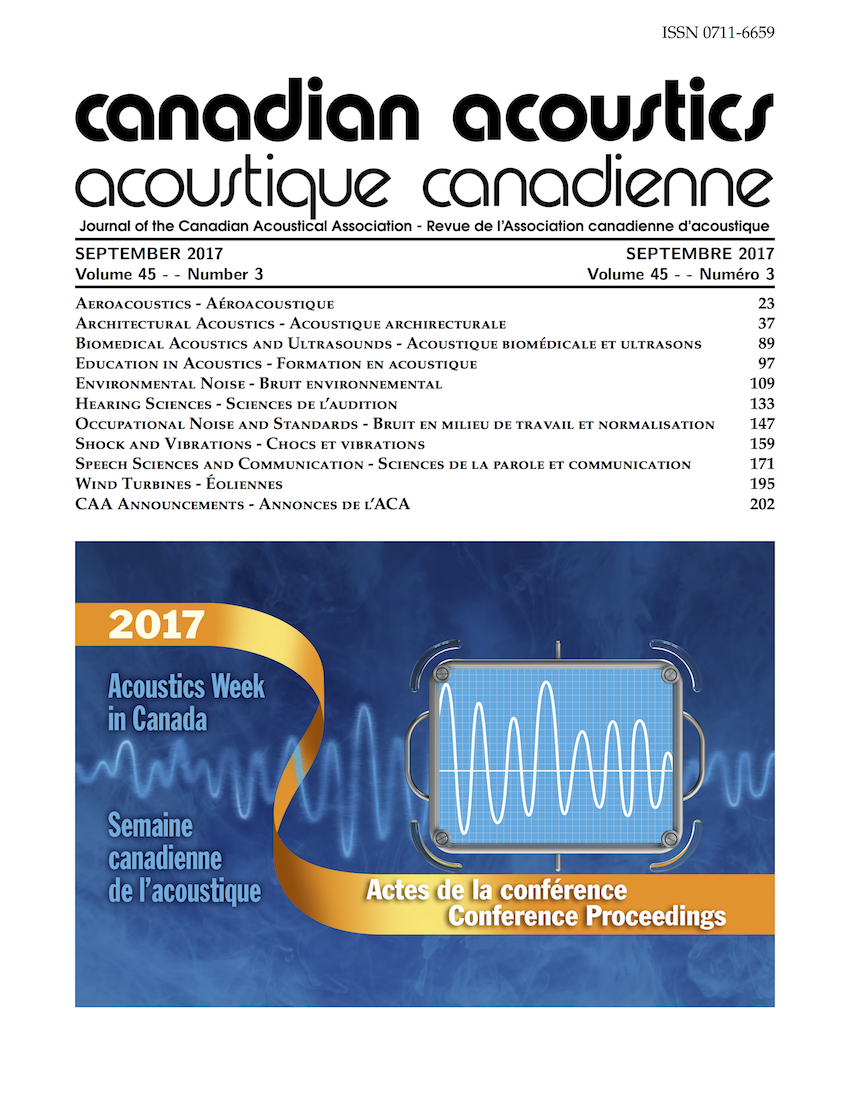UPPER LIMITS OF AUDITORY MOTION PERCEPTION WITH PERCUSSION SOUNDS
Abstract
With the emergence of electroacoustic music in the 1950s, composers started composing music with sounds moving around the listeners. Perceptual studies on sound localization have traditionally focused on static sound sources, but auditory motion perception has garnered increased research attention recently. Research in our lab used synthetic sounds and noises to estimate the upper limit for circular auditory motion perception; that is the velocity above which listeners are no longer able to track sounds that are revolving around them.
The current study extends this line of research to more instrumental sounds that are spectrally and temporally more complex than our previous stimuli. Sounds were extracted from a recording of Persephassa (Xenakis, 1969) a percussion piece for six players. Seated at the center of a 16-speaker circular array, 21 participants with normal hearing were asked to indicate in which direction the sound stimuli revolved around them. We used a two-alternative forced choice 2-up, 1-down adaptive procedure to estimate the upper limit for different instrumental sounds and well as pink noise. The upper limits varied as a function of the type of instrument, the family of instrument, and the playing technique. Specifically, the upper limits for three simantras (two wood and one metal) and a piccolo snare drum were significantly lower than for pink noise. The upper limits for two metal instruments (simantra and cymbal) were significantly different from each other.
To trace the variation in upper limits to acoustic properties, audio descriptors were extracted from the instrumental sounds using the MIR toolbox. Based on this analysis, we generated new stimuli with varying signal-to-noise ratios and event densities. A follow-up experiment investigated the effect of these features on the upper limit.
Additional Files
Published
How to Cite
Issue
Section
License
Author Licensing Addendum
This Licensing Addendum ("Addendum") is entered into between the undersigned Author(s) and Canadian Acoustics journal published by the Canadian Acoustical Association (hereinafter referred to as the "Publisher"). The Author(s) and the Publisher agree as follows:
-
Retained Rights: The Author(s) retain(s) the following rights:
- The right to reproduce, distribute, and publicly display the Work on the Author's personal website or the website of the Author's institution.
- The right to use the Work in the Author's teaching activities and presentations.
- The right to include the Work in a compilation for the Author's personal use, not for sale.
-
Grant of License: The Author(s) grant(s) to the Publisher a worldwide exclusive license to publish, reproduce, distribute, and display the Work in Canadian Acoustics and any other formats and media deemed appropriate by the Publisher.
-
Attribution: The Publisher agrees to include proper attribution to the Author(s) in all publications and reproductions of the Work.
-
No Conflict: This Addendum is intended to be in harmony with, and not in conflict with, the terms and conditions of the original agreement entered into between the Author(s) and the Publisher.
-
Copyright Clause: Copyright on articles is held by the Author(s). The corresponding Author has the right to grant on behalf of all Authors and does grant on behalf of all Authors, a worldwide exclusive license to the Publisher and its licensees in perpetuity, in all forms, formats, and media (whether known now or created in the future), including but not limited to the rights to publish, reproduce, distribute, display, store, translate, create adaptations, reprints, include within collections, and create summaries, extracts, and/or abstracts of the Contribution.


